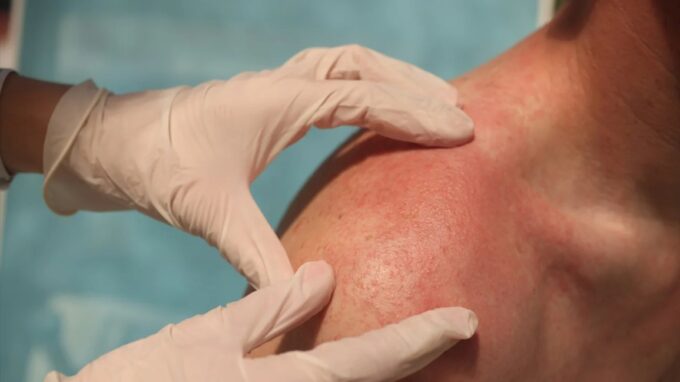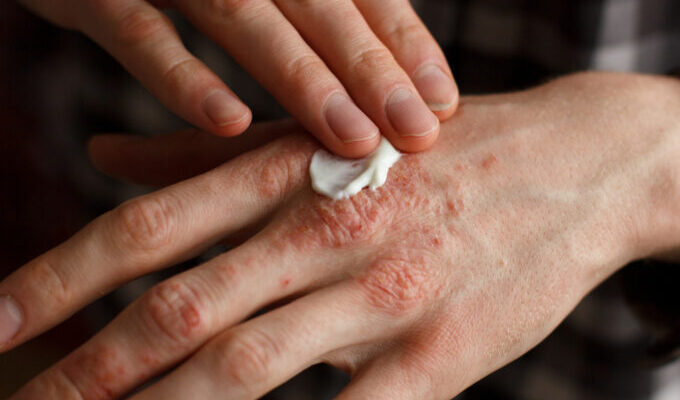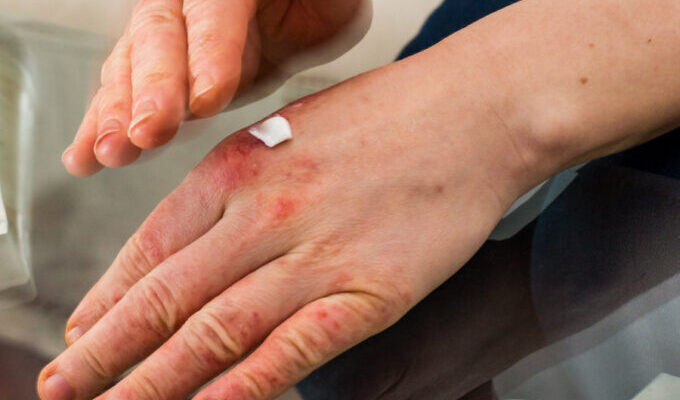Eczema affects numerous individuals, often bringing discomfort, itchiness, and aesthetic concerns. Many constantly seek a respite from its persistent symptoms, discovering that specialized creams can offer significant relief. The key question, however, remains: What’s the optimal frequency for these creams?
Making sense of this can significantly enhance treatment outcomes. In this comprehensive guide, we delve deep into the intricacies of eczema cream application, seeking to empower every reader with knowledge, direction, and hope. Beyond just symptomatic relief, the right treatment strategy can pave the path towards a better quality of life.
Understanding Eczema

Source: atlantaallergydoctor.com
Eczema, clinically known as atopic dermatitis, is essentially the skin’s overreactive response to certain triggers. From pollutants to specific foods, many factors can set off this response. This leads to inflamed, itchy, and often painful patches on the skin. A compromised skin barrier worsens susceptibility.
Creams tailored for eczema not only soothe these symptoms but crucially work towards skin barrier repair. Recognizing the specific nature of eczema, its triggers, and its manifestations, can significantly elevate the efficacy of treatments, ensuring that interventions are targeted, timely, and transformative.
Types of Eczema Creams
The world of eczema creams is vast and varied. First, we have moisturizers that are designed to lock in essential hydration, combatting the dryness which often exacerbates eczema’s severity. Then there are steroid-based creams. These are powerful agents, directly targeting the inflammation at the heart of eczema.
They come with varied potencies, suitable for different levels of severity. Finally, there are non-steroidal treatments. For those wary of steroids, these creams offer a viable alternative, modulating immune responses to relieve inflammation. Each type serves a unique purpose and requires distinct application routines.
Consult a Dermatologist

Our skin, the largest organ, demands expert care, especially when conditions like eczema arise. General advice can offer some direction, but for nuanced, personalized guidance, consulting a dermatologist is paramount. These skin experts assess the eczema’s type, severity, and likely causes, recommending how to use eczema cream and apt for individual needs.
Such tailored interventions can dramatically speed up recovery, ensuring that the treatment isn’t just generalized but optimized for individual success. Beyond just relief, a dermatologist’s input can guide prevention strategies, making recurrent flare-ups less frequent and less severe.
Read the Product Label
Every credible eczema cream is the result of extensive research and testing. Manufacturers, after rigorous trials, provide application guidelines that maximize efficacy and safety. These insights are translated into the instructions on product labels. Adhering to these guidelines ensures that the cream works as intended, offering relief without unintended side effects.
Beyond just frequency, labels offer insights into storage, expiration, and potential contraindications. Reading, understanding, and following these instructions is a simple yet pivotal step in one’s journey towards eczema relief, ensuring that every application is both safe and effective.
Moisturizing Eczema Creams

Source: health.clevelandclinic.org
Hydration plays a dual role in eczema care. On one hand, it directly combats the dryness that characterizes and worsens eczema. On the other, it fortifies the skin’s barrier against irritants. Moisturizers, hence, are foundational in eczema care. Most dermatologists advise applying these creams at least twice daily.
However, factors like climate, personal skin type, and specific product formulation can tweak this frequency. The core principle remains: keep the skin supple and well-hydrated, ensuring it remains resilient against both internal and external eczema triggers.
Steroid Eczema Creams
Steroid creams, renowned for their potent anti-inflammatory properties, directly target the redness and swelling characteristic of eczema. These creams can be a game-changer, especially for moderate to severe cases. However, their potency demands prudence. Overuse can thin the skin or lead to other side effects.
Most dermatologists advise starting with a more moderate concentration, then adjusting based on response. Additionally, certain areas, like the face or the folds of the skin, might require lower-strength steroids. Ensuring an appropriate frequency, often once or twice daily, can maximize benefits while minimizing risks.
Non-Steroid Eczema Creams

Source: dermcollective.com
Not everyone is a candidate for steroid creams or wishes to use them. Enter non-steroidal options, such as calcineurin inhibitors. These creams modulate the immune response, reducing inflammation without the risks associated with steroids. Brands like Elidel and Protopic fall under this category.
While potent, they come with their own set of precautions and recommended frequencies, often once to twice daily. It’s crucial to remember that while they sidestep steroid-related risks, they have their own set of considerations, underscoring the importance of dermatologist consultation and label diligence.
Frequency for Severe Eczema
Severe eczema transforms simple daily tasks into challenges. Intense itching, pain, and skin breakdown necessitate aggressive intervention. In such cases, cream application might become more frequent, sometimes several times daily. However, there’s a delicate balance to maintain.
While the skin craves relief, over-applying even the most effective creams can sometimes exacerbate symptoms or lead to side effects. Close monitoring by a dermatologist is essential, allowing for real-time adjustments in frequency and potency based on the skin’s evolving needs and responses.
Factors Affecting Frequency

Source: au.balmonds.com
Eczema care isn’t monolithic. Multiple factors, from age and skin type to the local climate, influence treatment strategies. Children’s delicate skin might require gentler creams and less frequent application. Similarly, those in drier climates might need to moisturize more often.
Even daily activities, like swimming, can influence how often one should reapply creams. Recognizing and respecting these individual variables ensures that treatment remains dynamic, adjusting in real-time to provide the most comprehensive relief while protecting the skin from potential harms.
Avoid Overuse and Underuse
Striking the right balance is at the heart of eczema care. Overapplying creams, driven by a quest for quicker relief, might seem tempting but can backfire. Overuse can lead to thinner skin, resistance, or exacerbation of symptoms. Conversely, underuse, often out of fear of side effects, can leave the skin under-protected and susceptible to flare-ups.
Recognizing signs of misuse, such as persistent redness or worsening symptoms, is crucial. Making informed, balanced decisions can ensure that creams remain allies in the fight against eczema, rather than inadvertently becoming adversaries.
Conclusion and Recap
Eczema, while challenging, is surmountable with the right care. Understanding one’s skin, the nature of available creams, and the factors that influence treatment is crucial. Through this guide, we’ve navigated the intricate world of eczema creams, emphasizing the importance of informed application frequencies.
Dermatologist consultations, diligent label reading, and an ongoing commitment to self-care remain paramount. As we conclude, remember that while creams offer significant relief, their power is maximized when used judiciously, tailored to individual needs, and in conjunction with a holistic approach to skin health.







